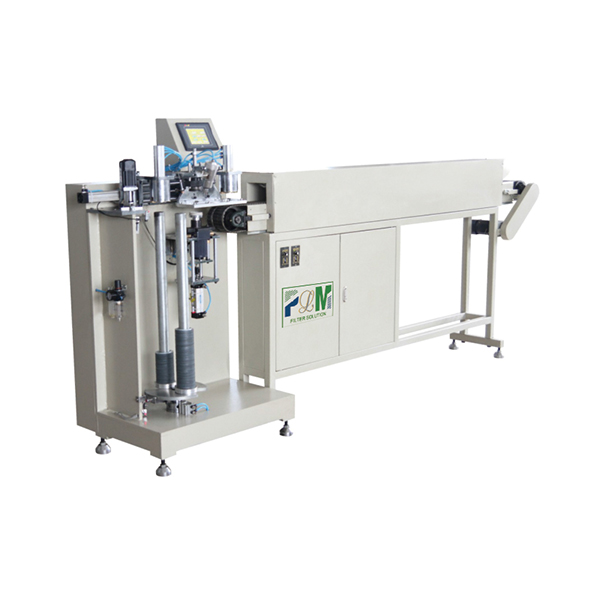Nov . 08, 2024 10:36 Back to list
Service and Maintenance for PLC-Based Ultrasonic Welding Machines to Ensure Optimal Performance
Understanding the PLCs-1 Ultrasonic Welding Machine Service Insights
Ultrasonic welding has emerged as a vital technology in various industries, particularly in the fields of plastics and metals. Among the various tools and machines that facilitate this process, the PLCs-1 ultrasonic welding machine stands out for its efficiency and versatility. This article aims to provide insights into the service aspects of the PLCs-1 ultrasonic welding machine, covering its features, maintenance, troubleshooting, and overall importance in manufacturing.
Features of the PLCs-1 Ultrasonic Welding Machine
The PLCs-1 ultrasonic welding machine is equipped with sophisticated features that enhance its functionality. It typically consists of a power supply, an ultrasonic converter, a booster, and a welding sonotrode. The machine operates by converting electrical energy into mechanical energy, generating rapid ultrasonic vibrations that create localized heat sufficient to melt and join materials.
One of the key advantages of the PLCs-1 is its programmable logic controller (PLC) system, which allows for precise control over the welding parameters. Users can easily adjust settings such as power output, frequency, amplitude, and welding duration, leading to consistent and high-quality welds. Moreover, the machine is designed to accommodate various materials, including thermoplastics and metal components, making it exceptionally versatile.
Maintenance of the PLCs-1
Proper maintenance is crucial for ensuring the longevity and optimal performance of the PLCs-1 ultrasonic welding machine. Regular maintenance should include
1. Cleaning the Components Accumulated debris can affect the performance of the machine. Regularly cleaning the sonotrode, booster, and other parts will prevent contamination and inefficiencies. 2. Checking Connections Inspecting electrical connections and ensuring that the wiring is secure can prevent electrical malfunctions. Loose connections can lead to inconsistencies in power delivery, affecting weld quality.
3. Updating Software Keeping the PLC software updated ensures that the machine benefits from the latest features and enhancements. Software updates may also include vital security patches.
4. Calibration Regularly calibrating the machine ensures that it operates within specified tolerances. Accurate calibration leads to consistent results and helps in maintaining quality standards.
5. Routine Inspections Scheduled inspections help identify potential issues before they become significant problems. This proactive approach minimizes downtime and extends the machine's service life.
plcs-1 ultrasonic welding machine service

Troubleshooting Common Issues
Despite its reliability, operators may encounter issues while using the PLCs-1 ultrasonic welding machine. Understanding common problems and their solutions can facilitate effective troubleshooting
1. Inconsistent Welds If welds are inconsistent, the first step should be to check the power settings and ensure they are correctly configured. Additionally, inspect the sonotrode for wear, as a worn-out sonotrode can lead to poor welding results.
2. Machine Not Starting If the machine fails to start, check the power supply and ensure that all connections are secure. Inspecting circuit breakers and fuses can also be helpful.
3. Overheating Overheating can affect performance and damage components. Operators should assess the cooling systems and ventilation, verify that they are functioning correctly, and avoid prolonged use without breaks.
4. Software Errors In case of software malfunctions, consider resetting the PLC system or referring to the user manual for troubleshooting steps. If the problem persists, contacting customer support may be necessary.
Importance in Manufacturing
The PLCs-1 ultrasonic welding machine plays a significant role in modern manufacturing. Its ability to produce high-quality welds rapidly makes it ideal for various applications, from automotive components to electronic assemblies. The machine's efficiency contributes to reduced cycle times and lower production costs, giving manufacturers a competitive edge.
Moreover, its precision ensures minimal waste, aligning with sustainable practices that many companies are now prioritizing. The adaptability of the PLCs-1 to different materials and industries further enhances its importance in today’s diverse manufacturing landscape.
Conclusion
The PLCs-1 ultrasonic welding machine is an exceptional tool that streamlines manufacturing processes across various industries. Understanding its features, committing to regular maintenance, and being equipped to troubleshoot common issues are crucial for maximizing its performance and ensuring long-term reliability. As technology continues to evolve, the PLCs-1 will remain a cornerstone in the realm of ultrasonic welding, driving innovation and efficiency in manufacturing.
-
Durable Sintered Porous Metal Filter Tube Cup & Machines
NewsJul.22,2025
-
Effective Active Carbon Air Filter for Purifiers | Eliminate Odors
NewsJul.21,2025
-
PLJT-250-25 Full-auto Turntable Clipping Machine | Efficient Automation
NewsJul.20,2025
-
Cheap PLJY109-500 Full-Auto HDAF Expanded Mesh Spiral Coiling Machine - High Efficiency & Quality Manufacturer
NewsJul.08,2025
-
Best PLHJ-6 Full-Auto Eco Filter Rotary Heat Plating Machine - High Efficiency & Eco-Friendly Solution
NewsJul.08,2025
-
High-Efficiency Paper Pleating Machine for Filters Trusted Filter Paper Pleating Machine Company
NewsJul.07,2025
